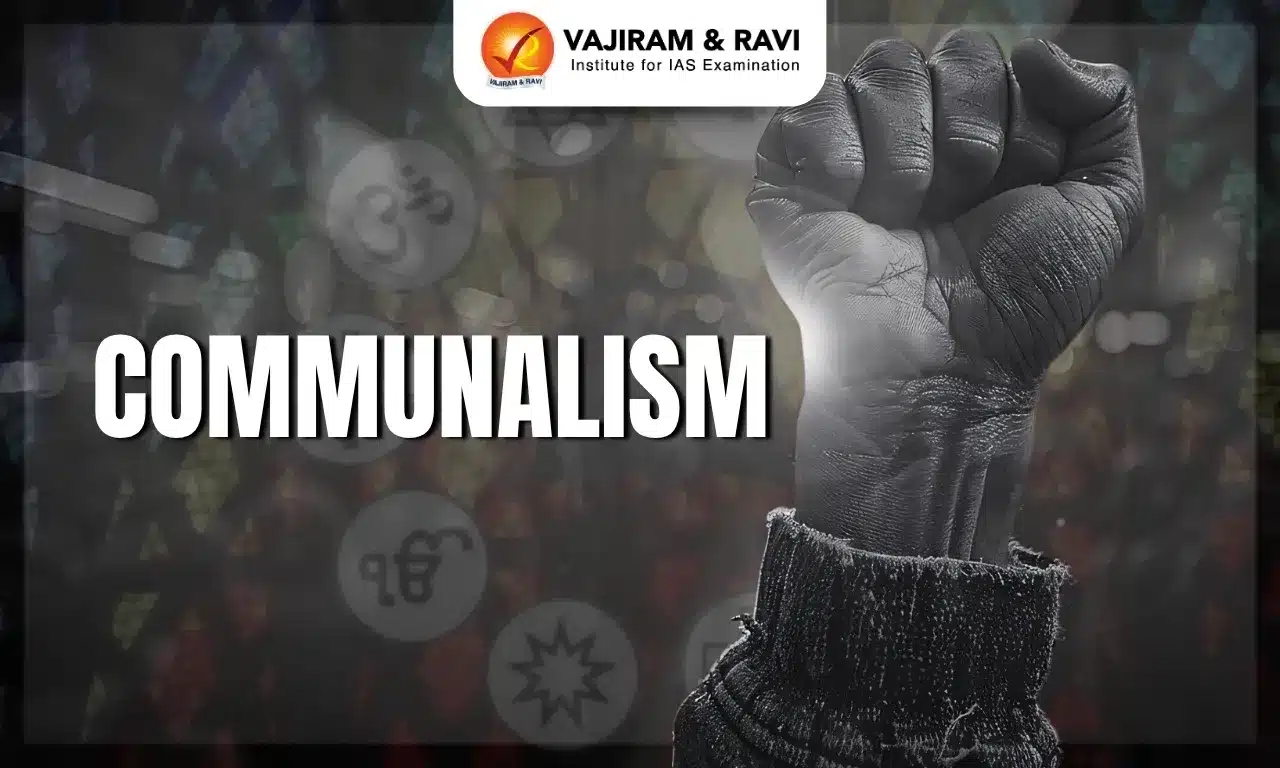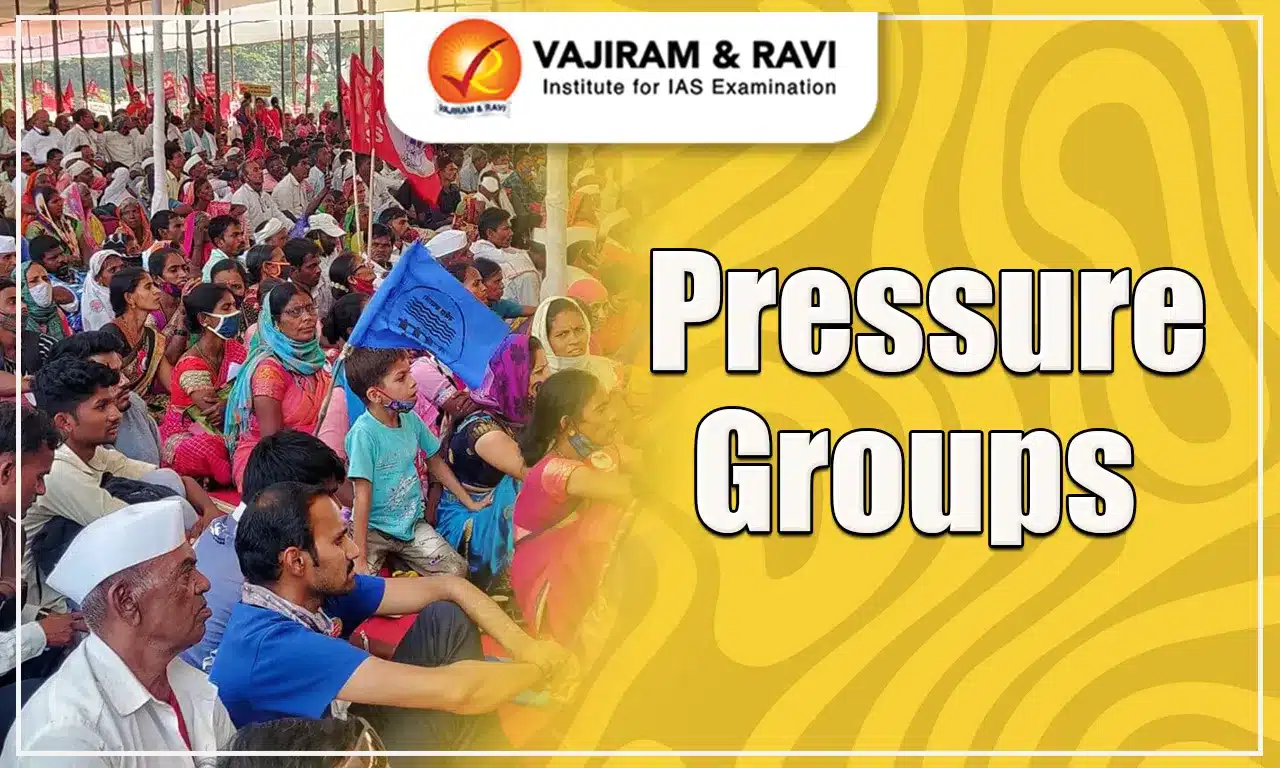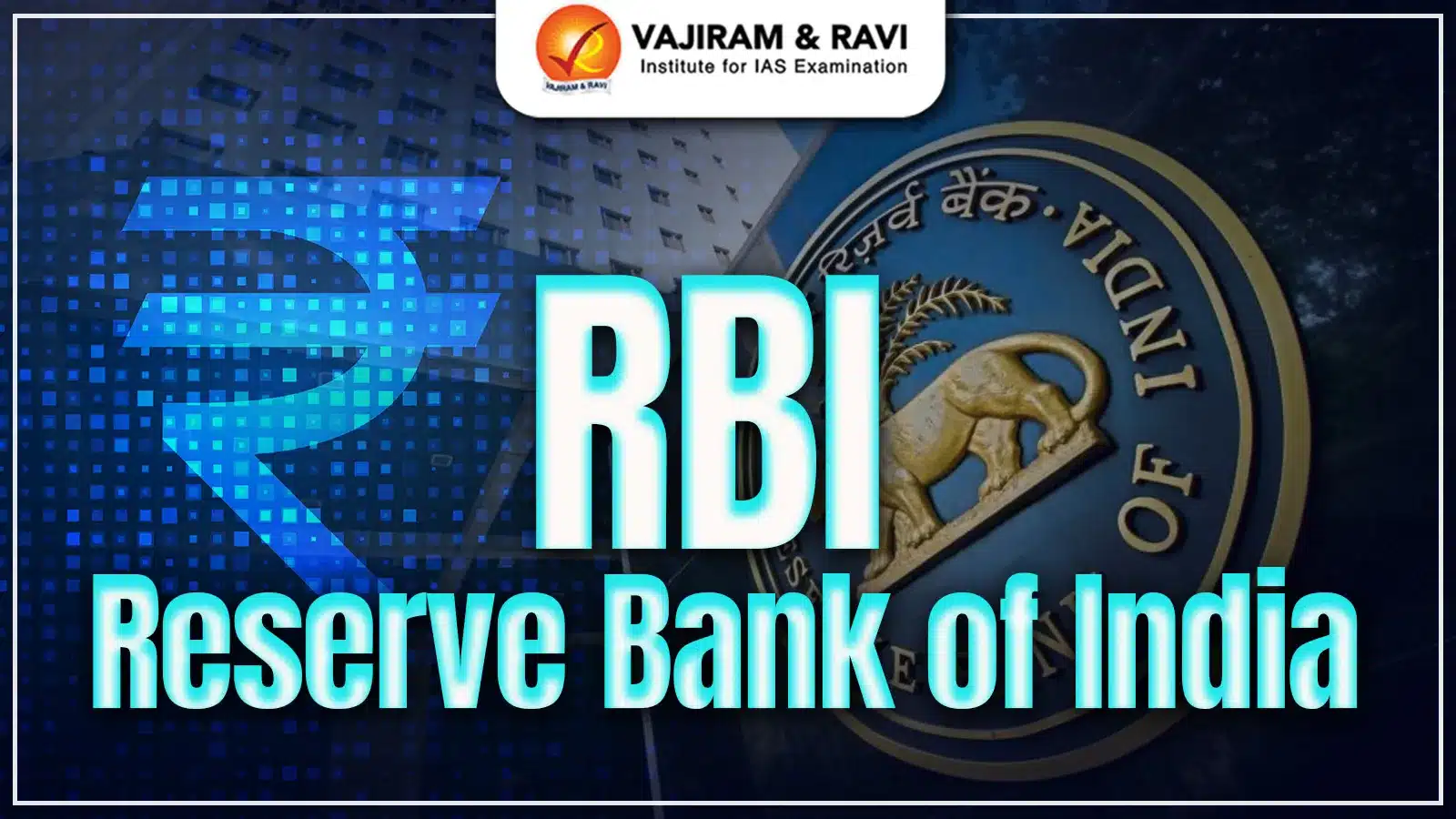Communalism in India has been a significant issue, both in the pre-and post-independence periods, contributing to social conflicts and political tensions. Rooted in the belief that one’s religious community holds superiority, it has often resulted in violence and division between various religious groups. The British colonial policy of "divide and rule" further exacerbated communal divisions, creating lasting rifts in Indian society.
In modern India, communalism continues to shape the political landscape, amplified by the rise of information technology and social media, which often spreads provocative content. As a result, communal tensions are frequently stoked, leading to sporadic violence and instability. Therefore, it is crucial to address the factors driving communalism and implement measures for social harmony and national unity.
Communalism Meaning
Communalism views society as divided into separate religious communities, each with distinct political, economic, and social interests, creating an "us" versus "them" mentality. This division can lead to competition and conflict as communities fight for their interests. In its extreme form, communalism becomes particularly dangerous, with communities viewing each other as mutually antagonistic and placing religious identity above all else.
- Consequently, this heightens intolerance, orthodoxy, and the potential for violence, as one community's gain is perceived as another's loss.
- Furthermore, communalism has had a profound impact on India’s history, fueling violence and political instability during both colonial and post-colonial periods.
- For instance, the Babri Masjid demolition (1992) in Ayodhya exacerbated religious divisions across the country.
Communalism Dimensions
Communalism manifests in various forms, each influencing society and politics in distinct ways. These dimensions range from mild expressions of religious identity to more extreme, violent forms that fuel societal divisions and conflicts.
- Assimilationist: According to this dimension, members of minority communities should give up their distinct cultural and religious identities and assimilate into the dominant culture and society.
- For example, the Hindu Code Bill applies to Sikhs, Buddhists, and Jains in addition to Hindus.
- Welfarist: This connotation refers to the belief that members of minority communities should be provided with special welfare and affirmative action programs to improve their socio-economic status.
- For example, Jain community associations utilize a welfarist approach by providing resources such as hostels, scholarships, and employment opportunities for the members of the community.
- Retreatist: By following the retreat approach, minority communities retreat into their own separate and distinct communities, away from the dominant culture and society.
- Retaliatory: In retaliation, people retaliate against the dominant culture and society in response to perceived injustices and discrimination.
- Separatist: Separatists believe that members of minority communities should form a separate state as an independent country.
- For example, Separatist tendencies, especially in the 1980s, among religious fundamentalists in Punjab who demanded Khalistan as a separate country.
Communalism in India Evolution
Evolution of communalism in India reflects a growing sense of division and hostility towards other communities, shaped by historical events and changing socio-political circumstances. Despite India's rich cultural ethos, rooted in religious tolerance and secularism, communalism gradually took hold and began influencing society, undermining the very principles that once promoted unity and coexistence.
Two-Nation Theory and Partition of India
The partition of India is a blemish on Indian cultural history. It was completed based on the so-called “Two-Nation Theory”, which evolved during the Indian Freedom Struggle.
-
- Reasons: There are many reasons for this, but the significant ones are:
- The communal tone of Socio-religious reforms, from both Hindus and Muslims
- British Divide and Rule Strategy
- Muslim League’s assertive demand for Pakistan
- Jinnah ambitious politics
- Congress’ mistakes, first in over-appeasing and then failing to accommodate the League’s demand
- Partition of India in 1947: One of the most significant events in India's history, the partition led to the creation of Pakistan and resulted in widespread communal violence and displacement of millions of people.
- Reasons: There are many reasons for this, but the significant ones are:
- During and just before the partition, India experienced its worst communal riots from 1946 to 1948.
- Impacts: The impact of communalism during the Indian national movement and the Partition sowed the seeds for the continuation of communal tensions in India.
- It got entrenched in the national psyche on the eve of independence. More importantly, it is the reason for the permanent hatred in society.
Communalization of Politics After Independence
After independence, many efforts were made to promote secularism in India, such as focusing on modern education, promoting scientific temper, and the Government's stance on the political hardliners. But, it could not remain for a long time and the power struggle amongst the Indian political parties led to a new phase of communalism in India.
- Resurgence of communalism: The decade of 1960, was infamously called a 'dangerous decade’ by Selig Harrison due to internal conflicts and insurgency, wars, political confusion, etc. It was also a decade of the resurgence of communalism in India.
- The first major riot that occurred after the partition was in Ahmedabad, Gujarat in 1969, mainly due to the economic conflict between local Hindus and Muslims as well as a political conflict between Indira Gandhi’s faction, Congress (R), and Jan Sangh.
-
-
- Since then, communal agenda has been intrinsic to the Indian polity.
- Appeasement politics, communal speeches and use of ideological rhetoric by political class and intelligentsia to ignite the voters are some of the methodologies in India.
- All this has been done in the name of vote-bank politics.
- The after-effects of partition can be observed even now as the event left a long-lasting impact on the Indian psyche, often aggravated and then cultivated by the political class for electoral gains.
- Communalisation of Punjab: From the late 1970s, there was a rise of communal tensions in Punjab, mainly fed by the extremist leader Jarnail Singh Bhindranwale.
- Operation Blue Star was carried out by the Indian Army killing Bhindranwale and others further widening the tension.
- In 1984, Indira Gandhi, the then Prime Minister was cruelly assassinated and in response, anti-Sikh riots (pogroms) were organized in Delhi and other certain parts of India.
- These were the reasons that Punjab was engulfed by Sikh extremism and communalism for the next decade, finally brought down by the Punjab police.
-
- Question of Kashmiri Pandits (1989-90): The genocide and forced exile of the Kashmiri Pandits from Jammu and Kashmir is an unfortunate incident in Indian history.
- Among other things, the cause of this event was communal hatred.
- Issue of Babri mosque demolition (December 6, 1992): It is the most sensitive issue of communalism in post-independent India. The built-up of the event and its impact, both caused some serious manifestations in terms of communal rights.
-
- Shah Bano Case and Associated Events: Built-up of the event was the Shah Bano case, unlocking the door of the mosque, organization of rath yatras, gathering of karsevaks, etc.
- Major Riots Before and After: Many riots occurred before and after the demotion of the mosque but the most serious were the Bhagalpur (Bihar) riots of 1989; and the Godhra train tragedy and its reaction, the Gujarat riots in 2002.
- Rural Areas Impacted by Communal Riots: One of the important features of these riots was that these riots occurred also in the rural areas of India, against the common notion that riots are an urban phenomenon.
Communalism in India Recent Trends
In recent years, communalism in India has undergone significant changes, primarily influenced by the rise of social media, the evolution of Indian politics, and the impact of global events. These recent trends reflect how the dynamics of communal tensions have adapted to the new digital age, transforming how religious divisions manifest and spread across the country.
-
- Features: The recent trends in communalism in India are characterized by the following features:
- Mob lynching and sporadic individual events
- Small-scale but intense riots
- Communal slogans
- Features: The recent trends in communalism in India are characterized by the following features:
- Reasons: The recent rise in communalism in India can be attributed to the following factors:
-
- Highly politicized environment and polarised populace, fueled by the political parties, bipartisan media, and biased academia.
- Many factions of Indian society have been forced to perceive that the state is against them.
- Hate speeches on social media and its rapid spread
- Increasing intolerance and radicalization amongst youth, mainly due to the daily consumption of fake news and biased opinions
- Violent manifestations: Various cases of Mob lynching, cow vigilantism, and throat-slitting in the last few years
- Muzaffarnagar riots 2013, Delhi Riots 2020, Nuh Violence 2023, etc.
Communalism in India Causes
The main causes of communalism can be complex and multifaceted and vary depending on the specific context. However, some of the main causes of communalism include:
-
- Historical Factors: The British divide-and-rule strategy, opportunistic social and political activities, and the partition of India supported by the two-nation theory are the main elements of communal divisions in India.
- Dwelling on the past and romanticism in ancient as well as medieval India caused a communal superiority complex.
- Political Factors: The political power struggle between different ideologies gives rise to communal politics.
- The divisive political rhetoric, communal speeches, and appeasement policies create ground for communalism.
- Vote bank politics and the voters aligning with the communal rhetorics further enhance the tensions.
- These factors have been the dominant reason for the growth of communalism in post-independent India.
- Socio-cultural Factors: The cultural dissimilarity and practices between indic and non-indic regions create grounds for mutual mistrust and intolerance.
- A civilizational country like India, having almost all the religions residing together, cannot evade the religious tension.
- Differential perspectives of nationalism and patriotism, fed by political ideologies and biased academia, create an atmosphere of distrust in Indian society. This leads to the break of historical social cohesion and peaceful co-existence in India.
- Economic Factors: Economic factors such as poverty, unemployment, and relative deprivation regarding resources contribute to social tensions including communalism.
- The economic conditions of the minorities especially Muslims, as per the Sachar Committee Report, are not on par with the other communities. This creates the feeling of relative deprivation.
- Historical Factors: The British divide-and-rule strategy, opportunistic social and political activities, and the partition of India supported by the two-nation theory are the main elements of communal divisions in India.
- Psychological Factors: Psychological factors contributing to communalism in India stem from the following conditions:
- A major part of the history of India has been about Hinduism and its factions, which led to different religions, along with the cultural practices and way of life.
-
- The growth of Abrahamic religions, particularly Islam, is often viewed by the majority as a foreign influence.
- As a result, Muslims and other minority groups sometimes struggle to assimilate with the majority, fostering feelings of fear, insecurity, and exclusion.
- One of its manifestations can be observed as a ghettoization of minorities in India.
- Role of Media: The role of media in reinforcing communal ideologies and spreading misinformation and hate speech can aggravate communal tensions.
- Religious speeches by public figures: In some cases, religious fundamentalists and fanatics contribute to communal tensions through speeches and writings.
- Example, religious extremist groups and fringe elements can incite communal tensions in society.
Communalism in India Government’s Efforts
Government has implemented various measures to address the issue of communalism and its negative impact on society. These efforts aim to promote social harmony, protect minority rights, and curb the spread of communal tensions. The following measures are taken by the government to tackle communalism:
- Communal Harmony guidelines 2008: It contains preventive and administrative measures to tackle communalism, monitoring of communal cases and rehabilitation of victims, etc.
- Suitable advisories and alert messages are also sent to the State Governments/Union Territory Administrations from time to time
- Activities of organizations having a bearing on communal harmony in the country are also kept under the watch of law enforcement agencies, and requisite legal action is taken, where deemed necessary.
- National Foundation for Communal Harmony (NFCH): It is an autonomous organization with the Ministry of Home Affairs established in 1992 to promote Communal Harmony and National Integration.
- It also grants financial support for the rehabilitation of child victims of communal, caste, ethnic, or terrorist violence.
- Legal Provisions: The Indian Penal Code (IPC) Section 153A deals with communal violence and defines it as any act that promotes enmity between different groups on grounds of religion, race, place of birth, residence, language, etc and does acts prejudicial to the maintenance of harmony.
- Recently, the Government introduced a specific provision for mob lynching with the maximum punishment of the death penalty under the proposed Bharatiya Nyaya Sanhita (BNS) Bill.
Communalism in India Suggested Measures
Addressing the issues of communalism in India is a complex and multi-faceted task that requires a combination of short-term and long-term strategies. Some steps that could be taken to address the issues of communalism in India include:
- Promoting social harmony: Encouraging interfaith dialogue, cultural exchange programs, and educational initiatives that promote understanding and respect for different communities can help reduce communal tensions.
- Addressing socio-economic inequalities: Poverty, unemployment, and access to resources should be made universal.
- Reforms in education: Focus should be on scientific temper, moral education, etc.
- Regulation of Media, Movies, and other cultural platforms: Media and movies can mobilize people for communal harmony.
- Implementing legal measures: Punishing those who incite violence and discrimination based on communal identity can help reduce communal tensions.
- The criminal justice system in India should be reformed so that there are speedy trials and to provide adequate, timely compensation to the victims of riots or other communal violence.
- Addressing historical issues: Addressing historical injustices and conflicts by the independent judicial process can help to reduce communal tensions.
- Promoting secularism: Promoting secularism, where the state is neutral towards all religions, can help reduce communal tensions.
- Addressing the incidents of hate speech online: There is a need for a massive campaign sensitizing people towards media consumption and helping them to differentiate between free speech and hate speech. Monitoring of social media is also necessary.
Communalism in India UPSC PYQs
Q1: Communalism arises either due to power struggle or relative deprivation. Argue by giving suitable illustrations. (UPSC Mains 2018)
Q2: Distinguish between religiousness/religiosity and communalism giving one example of how the former has got transformed into the latter in independent India. (UPSC Mains 2017)
Last updated on November, 2025
→ Check out the latest UPSC Syllabus 2026 here.
→ Join Vajiram & Ravi’s Interview Guidance Programme for expert help to crack your final UPSC stage.
→ UPSC Mains Result 2025 is now out.
→ UPSC Notification 2026 is scheduled to be released on January 14, 2026.
→ UPSC Calendar 2026 is released on 15th May, 2025.
→ The UPSC Vacancy 2025 were released 1129, out of which 979 were for UPSC CSE and remaining 150 are for UPSC IFoS.
→ UPSC Prelims 2026 will be conducted on 24th May, 2026 & UPSC Mains 2026 will be conducted on 21st August 2026.
→ The UPSC Selection Process is of 3 stages-Prelims, Mains and Interview.
→ UPSC Result 2024 is released with latest UPSC Marksheet 2024. Check Now!
→ UPSC Prelims Result 2025 is out now for the CSE held on 25 May 2025.
→ UPSC Toppers List 2024 is released now. Shakti Dubey is UPSC AIR 1 2024 Topper.
→ UPSC Prelims Question Paper 2025 and Unofficial Prelims Answer Key 2025 are available now.
→ UPSC Mains Question Paper 2025 is out for Essay, GS 1, 2, 3 & GS 4.
→ UPSC Mains Indian Language Question Paper 2025 is now out.
→ UPSC Mains Optional Question Paper 2025 is now out.
→ Also check Best IAS Coaching in Delhi
Communalism in India FAQs
Q1. What is communalism?+
Q2. How did British rule fuel communalism in India?+
Q3. How does communalism affect Indian society?+
Q4. Who is called the father of the Communal Award?+
Q5. Has communalism always existed in India?+
Tags: communalism quest

















